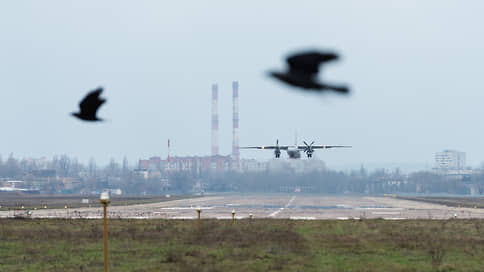The Ministry of Transport, Rosaiviation and airports are looking for money for the reconstruction of airfields
[ad_1]

The authorities and airport holdings are discussing scenarios for joint investments in maintaining state-owned airfield infrastructure. The need is estimated at 50 billion rubles. per year, and for 2025 only 5 billion rubles are included in the budget. The first option involves concluding concessions, with 60% of the cost of infrastructure repairs covered by the budget. In the second option, 60% of the costs will be borne by private investors who want to return them through a new airport tax on passengers. Airlines, including S7, are wary of the idea.
The Ministry of Transport, Rosaviation and the airport holdings Novaport and Airports of the Regions are discussing how to finance the repair of runways and other airfield infrastructure owned by the state from the budget and passengers. Until 2022, the Federal Air Transport Agency was responsible for this, then the main part of the facilities was transferred to the jurisdiction of the Ministry of Transport.
The problem is that budget funding is being cut. The federal project “Development of Regional Airports” for 2019–2024 provided 267 billion rubles: an average of 44.5 billion annually. The budget for 2024 included 40.3 billion rubles, for 2025 – 5.3 billion, for 2026 – 9.4 billion. On average, about 57 billion rubles are required for the reconstruction of airfields. annually, said the general director of Tolmachevo airport Evgeniy Yankilevich at the NAIS-2024 forum.
But, as one of the negotiation participants told Kommersant, this option “is actually not being considered, there is no prospect of receiving money” (see “Kommersant” dated November 9, 2023).
According to Kommersant’s interlocutors, in the basic scenario, the infrastructure will be given to a private operator under a concession, with 60% of the costs reimbursed by the budget (in the form of infrastructure grants or soft loans).
Operators will return investments through an increase in tariffs (up to a third of the volume) and through non-airport revenues (from trade and catering). According to a Kommersant source in the industry, this option is being considered for 28 large airports with private operators (including Kaliningrad, Murmansk, Minvod, Novosibirsk) and was sent by the Ministry of Transport for consideration to the government.
As Novaport calculated, in this scenario, the increase in the passenger fare will be about 600 rubles. with a reconstruction cost of 10 billion rubles. (with a passenger flow of 600 thousand people). And, for example, for the airfield in Novosibirsk Tolmachevo with a passenger traffic of 9.1 million at a reconstruction cost of 18 billion rubles. the passenger would pay 75 rubles. from the ticket.
The Federal Air Transport Agency confirmed to Kommersant that the reconstruction of the airfield infrastructure within the framework of the PPP mechanism is at the development stage: “The specific conditions and list of airfields to which the mechanism is planned to be applied have not yet been approved.” The Ministry of Transport did not respond to Kommersant at the time of publication.
Another option assumes the inverse ratio of private and budget funds: 60% to 40%.
Private funds are expected to be returned through a targeted passenger fee, which will be transferred to the fund, and then redistributed to the most needy airfields. With a passenger flow of 100 million people per year, the fee rate will be 300 rubles, which airport holdings do not consider critical with “the average cost of a ticket being 10 thousand rubles.” According to Kommersant’s source, this scenario is being considered mainly for small airports where there are no private investors: the fund can also be replenished through the collection of the ATM Civil Code. All options require approval from the Ministry of Finance.
Raising funds from the market can be considered an inevitable alternative to government funding in order to avoid the risks of infrastructure degradation, says Fedor Borisov, an expert at the National Research University Higher School of Economics. The creation of an “airport fund” seems to him the most compromise form of raising funds.
The concession model should take into account the interests of all market participants, including passengers, noted Natalya Mzhelskaya, Deputy Director for Direct Cost Management at S7 Group. She recalls that over the past ten years, due to the introduction of new airport terminals, regulated tariffs and fees from airlines have increased up to two times at airports with passenger traffic from 4 million to 10 million people and up to four times at airports up to 1 million people. In the first year of tariff increases, additional costs per passenger can reach 2 thousand rubles. Therefore, according to Natalya Mzhelskaya, it is necessary to create an expert group with the involvement of all interested parties to discuss the parameters of concessions. In particular, the repayment period for projects must be at least 20 years, and the potential for growth in non-aviation income of operators must also be taken into account.
[ad_2]
Source link





